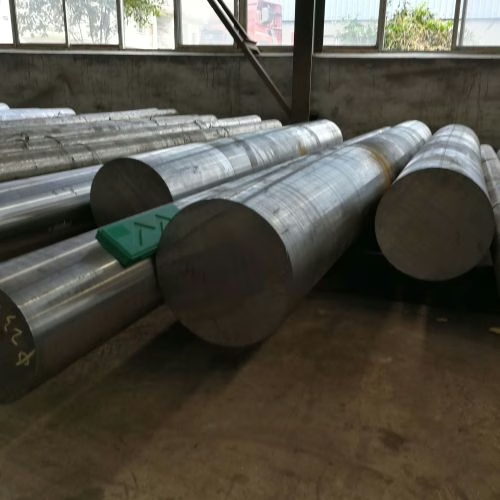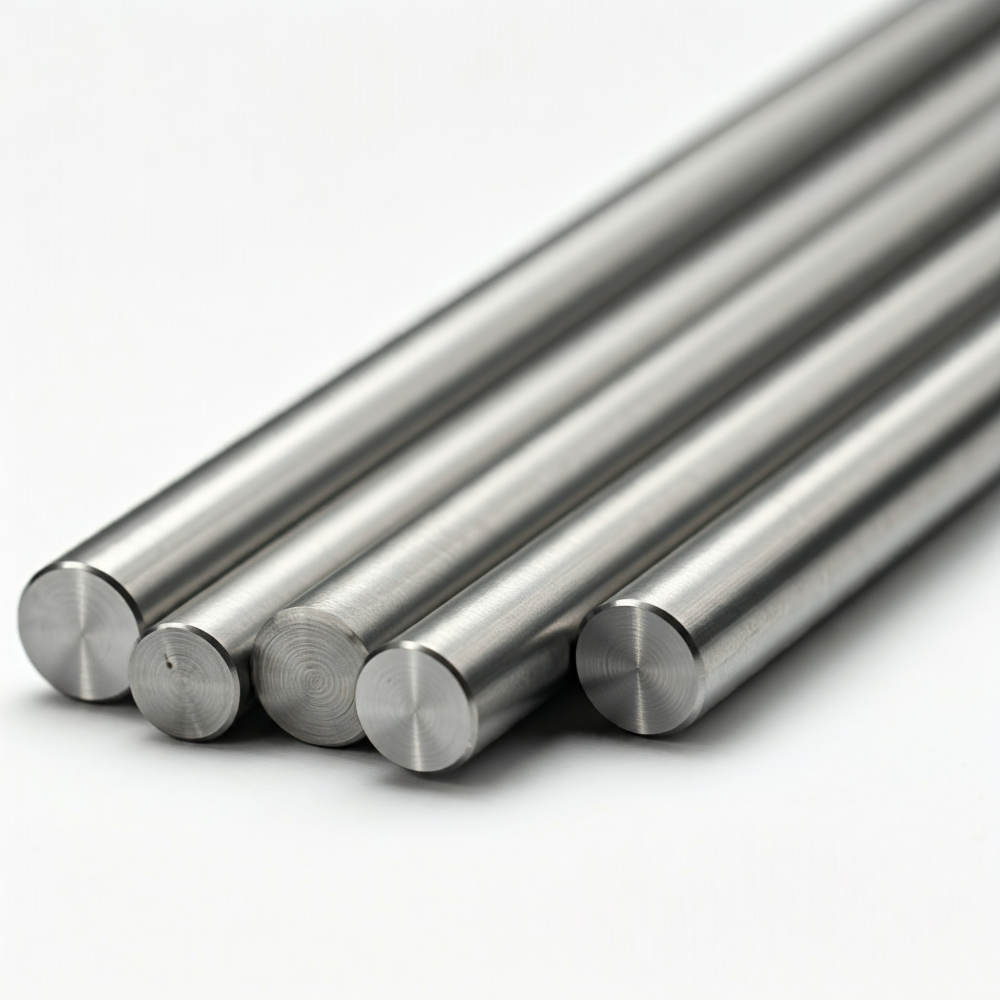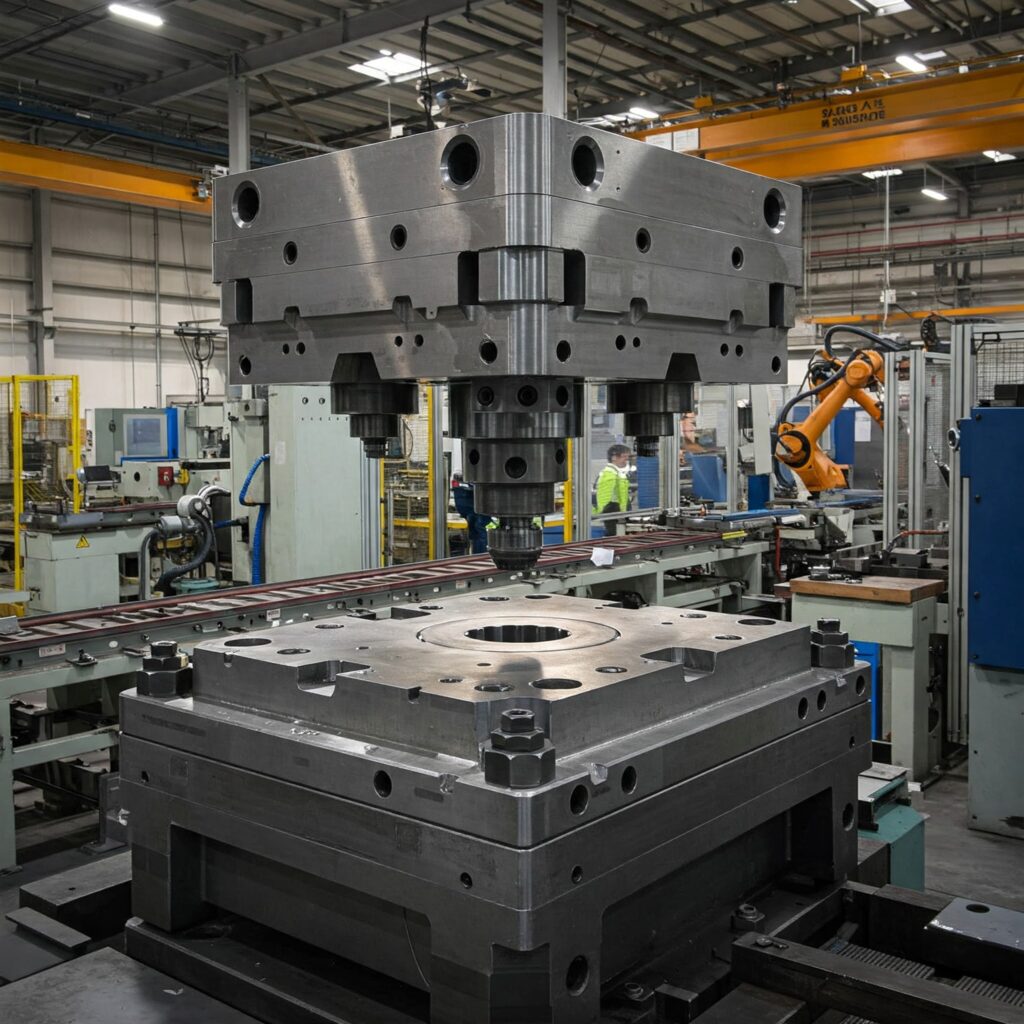Estimated reading time: 10 minutes
Key Takeaways
- S7 Tool Steel offers exceptional impact resistance and air-hardening capabilities, requiring proper heat treatment to unlock its full potential.
- The heat treatment process for S7 includes preheating, austenitizing, quenching, and double tempering, which are crucial for optimal performance.
- Chemical elements like Chromium and Molybdenum enhance machinability, hardness, and wear resistance in S7 Tool Steel.
- Maintaining precise temperatures and soak times during each heat treatment step is essential to prevent cracking and optimize toughness.
- Double tempering is mandatory to ensure complete transformation of austenite into martensite, promoting stability and durability.
Table of contents

S7 tool steel is an impact-resistant tool steel. Its greatest advantage is exceptional impact resistance. A characteristic of S7 steel is its “air-hardening” capability. After heat treatment, it can be hardened by cooling naturally in air, rather than requiring immersion in oil or water. S7 exhibits excellent dimensional stability during machining, resisting deformation or cracking.
However, the inherent superior quality of S7 steel is merely the foundation. To truly unlock its optimal performance, the heat treatment process is the critical step. Just as premium ingredients require masterful cooking to become a delicacy, S7 steel must undergo proper heat treatment to transform its internal microstructure. This process yields the high hardness, high toughness, and excellent wear resistance we require.
If heat treatment is improperly performed, even tools made from the highest quality S7 steel will see their performance significantly compromised. The heat treatment process for S7 steel includes preheating, austenitizing, quenching, and multiple tempering cycles.
Understanding S7 Tool Steel: Chemistry and Core Characteristics
The exceptional properties of S7 tool steel stem from its chemical composition, particularly the addition of chromium (Cr) and molybdenum (Mo) elements, which provide it with outstanding machinability and mechanical properties.
Specifically, its chemical composition is as follows:
- 0.50% Carbon (C): This medium carbon content is key to achieving the high toughness of S7 steel.
- 3.25% Chromium (Cr): Chromium significantly enhances the steel’s hardenability (ability to harden during heat treatment) and wear resistance.
- 1.40% Molybdenum (Mo): Molybdenum primarily enables S7 steel to retain its hardness (i.e., excellent “heat hardness”) in high-temperature environments.
- 0.25% silicon (Si): As a characteristic element of S-series impact-resistant steels, silicon is primarily used to enhance toughness.
It is precisely this combination of elements that endows S7 steel with several core advantages:
First, S7 tool steel boasts the highest impact resistance rating among all tool steels, making it exceptionally versatile for applications ranging from cold work dies and plastic molding dies to medium-duty hot work dies.
Secondly, S7 exhibits exceptional stability and safety during the hardening process of heat treatment. Compared to steels requiring oil or water quenching, S7 is less prone to cracking or dimensional distortion during heat treatment.
Additionally, S7 exhibits excellent machinability. More importantly, it maintains minimal hardness loss even at operating temperatures as high as 1000°F (approximately 540°C), making it fully capable for medium-temperature hot working applications.
The Step-by-Step Heat Treatment Protocol for S7
The final hardening process for S7 tool steel typically follows four fundamental steps: preheating, austenitizing, quenching, and tempering.
Preparation and Annealing
Before formal heat treatment, S7 steel is typically supplied in the annealed condition. The purpose of annealing is to soften the steel, making it more amenable to machining. Heat S7 steel to 1550°F (843°C) and hold for a sufficient duration based on material thickness. For example, hold for 1.5 hours per inch of thickness, or 3.5 minutes per millimeter of thickness. After holding, the steel must be cooled in the furnace at a rate of 14°C/25°F per hour to 900°F (482°C). Upon reaching this temperature, remove it from the furnace and allow it to cool to room temperature in air. S7 steel subjected to this complete annealing process will not exceed a maximum hardness of 230 HB (Brinell hardness), at which point the steel is in its softest state, most suitable for machining.
After rough milling and rough turning of S7 steel, stress relief treatment is strongly recommended. The purpose is to eliminate stresses accumulated within the material due to machining, thereby preventing unexpected deformation or cracking of the workpiece during subsequent high-temperature quenching and hardening processes.
For unhardened S7 material, the stress relief process involves: slowly heating the workpiece to 1250°F (677°C), holding at the temperature based on thickness, and finally cooling slowly to room temperature. The holding time is 2 hours per inch of thickness, or 4.7 minutes per millimeter of thickness.
Preheating
After completing preparatory steps such as annealing and stress relief, the hardening process for S7 steel formally enters the preheating stage.
It serves two primary purposes: first, to help release residual internal stresses in the workpiece after manufacturing or machining; second, to pre-adjust the molecular structure of the steel, preparing it for the austenitizing transformation phase. Heat the S7 steel to 1200°F (650°C), and after ensuring the entire workpiece—from surface to core—has uniformly reached this temperature, hold it for 10 to 15 minutes. It is crucial to avoid prolonged holding at the 1200°F (650°C) preheat temperature, as this may destabilize the steel’s molecular structure and adversely affect the final heat treatment outcome.
Austenitizing
After completing the preheating process, the heat treatment of S7 steel enters its third critical stage: austenitizing, also known as the hardening phase. The purpose is to heat the steel to a specific high temperature, allowing the alloy carbides within the steel to dissolve completely and transforming its internal structure entirely into a uniform austenite phase.
The recommended austenitizing temperature for S7 tool steel is 1725°F (940°C). After the workpiece is heated to this temperature, sufficient soak time is required, which must be precisely calculated based on the workpiece’s cross-sectional dimensions. A general rule of thumb is that for workpieces thicker than 1 inch (25 mm), the soak time should be based on the thinnest cross-section dimension, at a rate of one hour per inch. For thinner workpieces, the required time is correspondingly reduced; for example, a 1/8-inch (approx. 3.175 mm) thick section may only require a 30-minute soak. The holding time must be calculated only after the core temperature of the workpiece itself has fully reached the austenitizing temperature of 940°C, matching the furnace chamber temperature.
Quenching
The fourth step in S7 steel heat treatment is quenching. After completing the austenitizing hold, the steel must be rapidly cooled to transform the austenite formed at high temperatures into the extremely hard martensitic structure required for tools. S7 steel is an air-hardening tool steel, making air its preferred quenching medium.
However, air cooling has limited speed, so there is a section size limit for air cooling S7 steel. Workpieces with a maximum section thickness exceeding 2 1/2 inches (approximately 63 mm) may not be fully hardened by air cooling alone. For these large or heavy workpieces exceeding the air cooling limit, the optimal method is interrupted quenching or flash oil quenching. Immerse the S7 workpiece in oil and vigorously agitate it until the visible red heat subsides, approximately 540°C (1000°F). Immediately remove the workpiece from the oil and allow it to continue cooling in still room air to 150°F (65°C). This method ensures thorough quenching of large workpieces while minimizing thermal stress.
Regardless of the quenching method used, S7 components must be tempered immediately upon cooling to 150°F (65°C). This is because the newly formed martensite is in a highly stressed state, and any delay in tempering significantly increases the risk of cracking in the steel.
Tempering
The final step in S7 steel heat treatment is the tempering cycle, which aims to eliminate severe internal stresses generated during quenching, significantly enhance the steel’s toughness and ductility, and promote dimensional stability of the workpiece.
S7 steel must undergo double tempering. As an air-hardening steel, S7 may retain partially untransformed austenite internally after the first tempering and cooling. Performing a second tempering ensures this austenite fully transforms into new martensite, thereby maximizing the steel’s performance.
During each tempering cycle, the soak time should be calculated based on the workpiece thickness, with the standard being 2 hours per inch (25 mm) of thickness. Between the two tempering cycles, the workpiece must be fully cooled to room temperature.
The tempering temperature depends on the final application of the workpiece:
- For cold working, requiring high hardness and high toughness, the typical tempering temperature range is 400°F (204°C) to 500°F (260°C). The first tempering is performed at 450°F (230°C), followed by a second tempering at 425°F (220°C). Tempering within this range typically yields a working hardness of 56 to 58 HRC for S7 steel. Never temper S7 steel below 400°F (204°C).
- For hot work applications, heat resistance is required. If the workpiece must withstand operating temperatures exceeding 1000°F (540°C), the recommended tempering temperature range should be elevated to 900°F (482°C) to 1000°F (538°C). At this point, the recommended tempering temperature should be 25°F to 50°F (14°C to 28°C) higher than the anticipated maximum operating temperature to ensure the workpiece remains stable during actual use.
Relationship Between Hardness and Tempering Temperature of S7 Steel1
| Tempering Temperature | Rockwell C Hardness |
| As quenched | 62 |
| 300°F / 150°C | 59 |
| 400°F / 205°C | 58 |
| 600°F / 315°C | 55 |
| 800°F / 425°C | 52 |
| 1000°F / 540°C | 50 |
| 1200°F / 650°C | 41 |
1. Preheat Temperature: 1200°F / 650°C
2. Hardening Temperature: 1725°F / 940°C
3. Quench Method: Air Quench
4. Chemistry: Carbon 0.50%, Manganese 0.70%, Silicon 0.30%, Chromium 3.25%, Molybdenum 1.40%, Vanadium 0.25%
A typical application for S7 is in cold swaging dies, where it is typically used at a working hardness of 56–60 HRC. The tempering temperatures recommended (450°F / 230°C and 425°F / 220°C) are consistent with achieving hardness levels within this range from an as-quenched hardness of approximately 60 HRC.
Tempering induces dimensional changes. When S7 steel is tempered at 500°F (260°C) per specification, it may expand approximately 0.0006 in./in. (0.01524 mm/25 mm) along the grain direction and about 0.0002 in./in. (0.00508 mm/25 mm) perpendicular to the grain direction. For critical dimensions, it is recommended to consult the dedicated tempering dimensional change chart for S7 steel. The following table shows the dimensional change curves of S7 steel at different tempering temperatures.
Achieving Optimal Performance and Controlling Distortion
Proper heat treatment S7 not only determines the final mechanical properties of steel (such as hardness, toughness, and wear resistance), but also directly affects its dimensional stability. The key to S7’s dimensional stability lies in its nature as an air-hardening steel. When air-hardened from the correct austenitizing temperature, S7 exhibits predictable dimensional changes, typically experiencing very slight expansion of approximately 0.001 inch per inch (or 0.001 mm per mm).
After S7 steel has been quenched and tempered, if the workpiece requires subsequent severe operations such as finishing, welding, or electrical discharge machining (EDM), these processes introduce new residual stresses. To eliminate these new stresses, it is strongly recommended to incorporate a “stress relief post-hardening” process following these operations. The temperature for this stress relief annealing should be set within a range of 25°F to 50°F (14°C to 28°C) lower than the final tempering temperature.
Furthermore, it must be reiterated that double tempering for S7 steel is mandatory. The key reason lies in the fact that after the initial quenching and cooling of S7 steel, a portion of untransformed austenite inevitably remains within the material. The first tempering and subsequent cooling process promote the transformation of this retained austenite into fresh martensite. The core purpose of the subsequent second tempering is to temper this newly formed martensite, thereby further releasing residual stresses throughout the material and ensuring the full realization of the steel’s performance characteristics.
In summary, only by properly controlling the heat treatment of S7 tool steel can its impact resistance be truly ensured. Failure at any stage of this process will leave residual stresses within the workpiece, preventing it from achieving the desired performance and potentially leading to cracking.
- Bryson, William E. Heat Treatment, Selection, and Application of Tool Steels. 2nd ed., Hanser Publications, 2005, p. 197. ↩︎


